How to Paint an Arrow
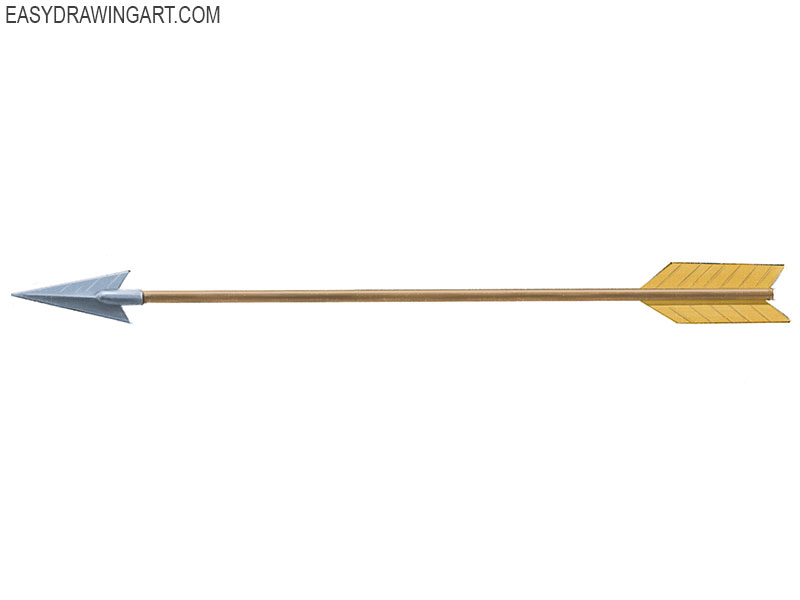
Before we begin this tutorial on how to paint an arrow and put the first strokes on the canvas, it is important to understand the key aspects that will allow us to successfully realize our object – the arrow. This tutorial aims to provide you with specific knowledge and techniques that will help you learn how to paint not only an arrow, but also various three-dimensional shapes using paints.
We’ll talk about how to use light and shadow to create dimension. This includes understanding how the location of a light source affects how we see an object, and how this can be used to add depth and realism to a form. You will learn to determine where the darkest shadows and brightest highlights should be in order to depict volume on a plane as realistically as possible.
In addition, we will look at paint application techniques that will help you create different effects in your image. You’ll learn the importance of brush stroke direction, how different brush shapes can create different textures, and how brush pressure affects color saturation and line width.
Composition also plays an important role in this lesson. We will discuss how the placement of the arrow on the canvas affects the overall perception of the work and how to use compositional principles to create balance and movement in the image.
How to Paint an Arrow
Step 1 – Create an initial arrow sketch
Begin with a rough sketch outlining the arrow’s shaft, tip, and fletching, establishing the overall form and proportions on your canvas or paper. Let us remind you that we have a lesson on drawing an arrow.
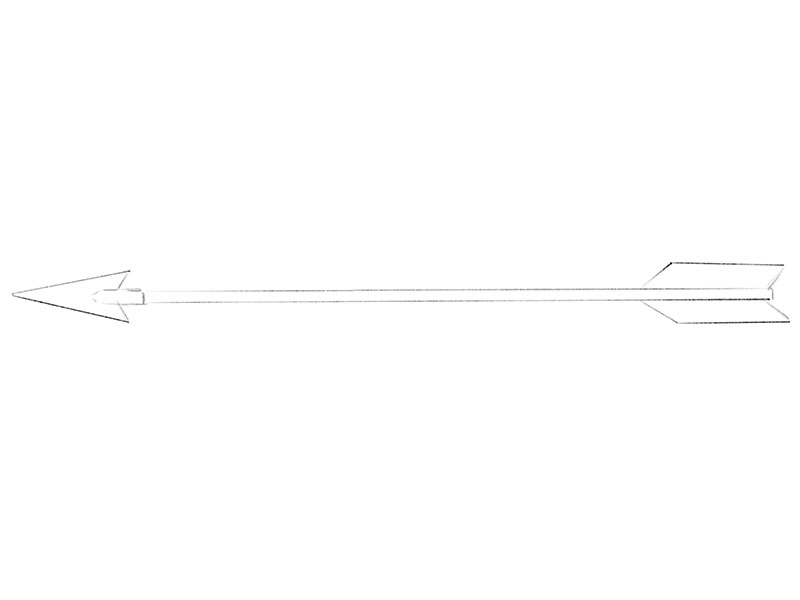
Step 2 – Paint the shaft of the arrow
Paint the shaft of the arrow using a suitable color that mimics the color of wood, applying a uniform base layer while leaving room for subsequent shading.
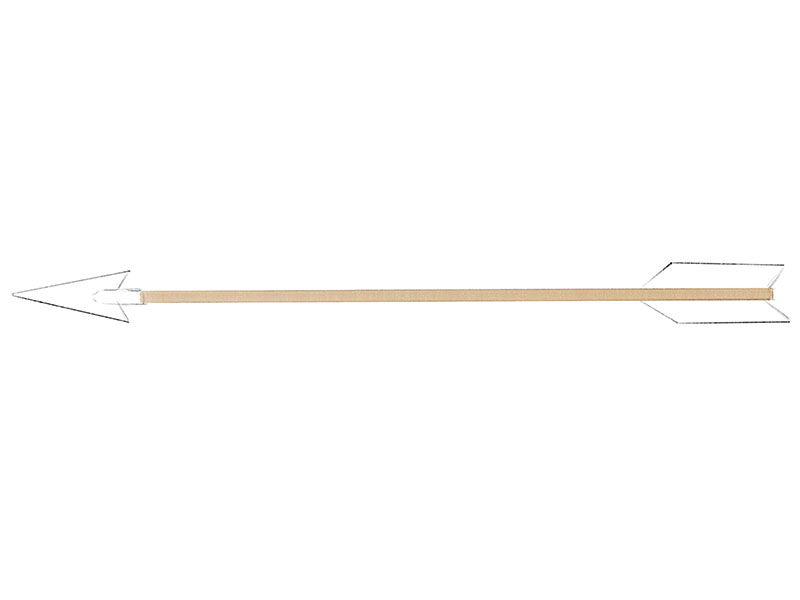
Step 3 – Paint the tip of the arrow
Apply the base color to the arrowhead, choosing a metallic shade like silver or gray. A tip color that contrasts more with the shaft will make your arrow painting more interesting.
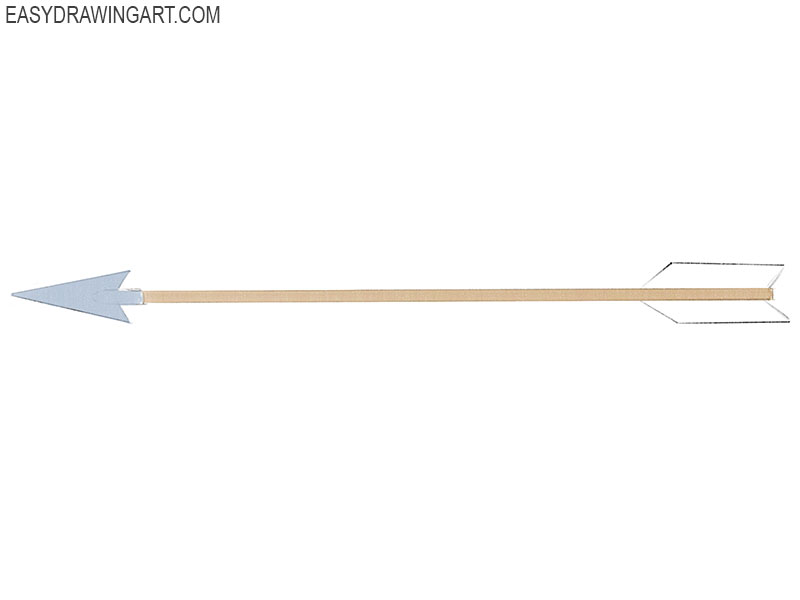
Step 4 – Paint the fletching
For the tail section, also use a base color that can be contrasted with the shaft for added emphasis. Try to make strokes of paint in the direction of the fletching.
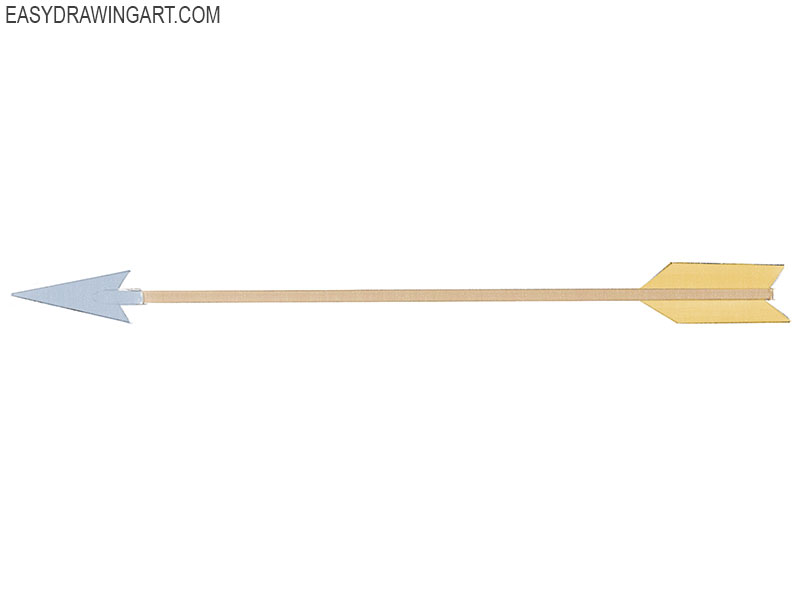
Step 5 – Add shadows to the painting
Add shadows along one side of the arrow painting, considering the light source to give the illusion of depth and volume to the shaft and fletching.
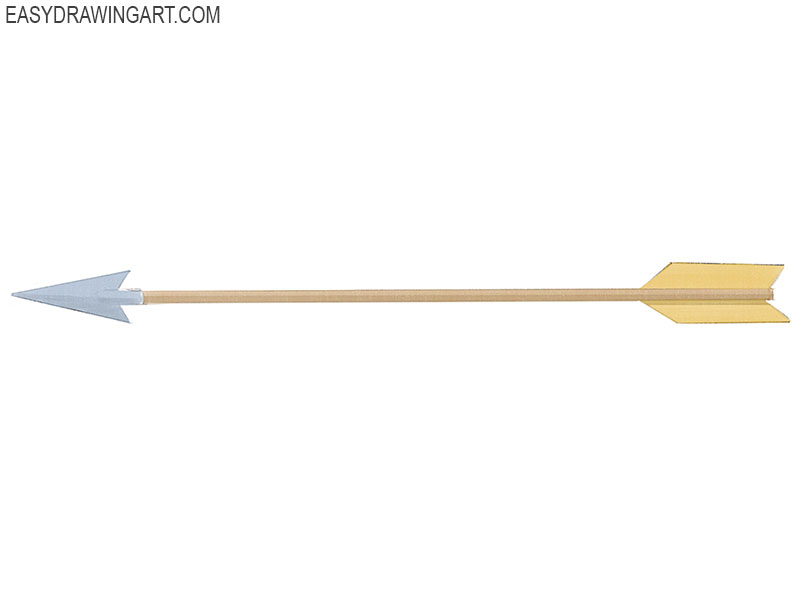
Step 6 – Add highlights and core shadows
Add highlights to the top of the shaft and the tip of the arrow. Intensify the darkness in areas furthest from the light to create core shadows, emphasizing the three-dimensionality of the arrow.

Step 7 – Finishing touches
Refine the details, enhance the contrast and perform color corrections, and bolster the fletching’s texture for a realistic and polished finish to your arrow painting.

As we wrap up our tutorial on how to paint an arrow, let’s dive once again into the technical aspects and lessons we’ve learned that will be the cornerstone of your artistic development.
We discussed how important it is to recognize the influence of light and shadow on the perception of volume in painting. This knowledge is the basis for creating realistic works, and I hope you will apply these principles to bring depth and realism to your future works.
We also explored how color choice and application can influence the sense of space and form. Using gradients, midtones and contrasts will help you create more expressive and dynamic images. These color modulation techniques are necessary to enhance the visual effect and add dynamism to compositions.
We also talked about the importance of choosing the right brushes and stroke techniques to achieve the texture and detail you want. Variety of brush strokes not only adds interest to your image, but is also an important tool for conveying your unique style and vision.
Lastly, remember the importance of composition. The arrow you painted today is not only the central element of the image, but also the leading component that guides the viewer’s eye. The ability to balance elements on a canvas, taking into account their weight and interaction, is an important skill for creating harmonious and complete works.
I hope this lesson has become a valuable resource for you in learning about painting and that the knowledge you gain here will be useful to you in creating your next masterpieces. Keep painting, develop your style, and remember that every piece of art is a reflection of your unique vision of the world.

